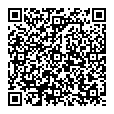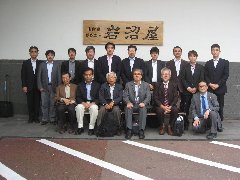The first scientific workshop
presented by the 22nd URSI-C in Japan
presented by the 22nd URSI-C in Japan
Session title:
"Radio science to tackle natural disasters"
1. Convener: Dr. Minoru Okada, Nara Institute of Science and Technology
2. Date/time: Nov. 4, 2011 / 13:00 - 17:00
3. Venue: Research Institute of Electrical Communication, Tohoku University RIEC Building #2 (W-Wing) 4F Conference Roome
4. Registration fee: Free
5. Listed attendees: 25 persons
6. Local arrangement: Dr. Shoichi Narahashi (NTT Docomo)
7. Session title: "Radio science to tackle natural disasters"
8. Presentation: 40 min for presentation,10 min for Questions and Comments
- 13:00 - 13:10 Opening Talk
- 13:10 - 14:00 "Damage of the telecommunication facilities in Tohoku earthquake", Masaki Fukui (NTT)
- 14:00 - 14:50 "Experiences in Tohoku earthquake and dependable wireless technology based on joint terrestrial and satellite networks" Dr. Kenji Suematsu (Tohoku Univ.)
- 15:20 - 16:10 "Construction of relief network in disaster area using ad-hoc network technology" Dr. Kenichi Mase (Niigata Univ.)
- 16:10 - 17:00 "Introduction of domestic mobile satellite communication system, WIDESTAR II, and role of satellite communication in disasters" Kazuichi Yamamoto (NTT Docomo)
9.Reception and Lamp Session at Iwafuneya, Sendai, Japan
10.Steering committee meeting took place from 8:00 to 9:00 Nov. 5
11. Concluding Remarks
10.Steering committee meeting took place from 8:00 to 9:00 Nov. 5
11. Concluding Remarks
We have four interesting talks about roles of radio science and its problems to face natural disasters. We have to conclude the problems of radio science against disasters when the six months have passed after the Tohoku great earthquake on March 11th, 2011. Many issues have been revealed in disaster relief by use of radio science.
In Tohoku earthquake, cellular networks and other radio communication systems, which were believed to be the robust system against disasters, has been damaged.
In this workshop, the engineers and researchers working for relief in the stricken area introduced valuable materials on the damage of the telecommunication systems due to earthquake and tsunami disasters. They also shows the construction and operation activities for the networks to face disaster. We have valuable discussion on disaster-resilient network technologies.
To view larger photo, please click above photo then type password.





